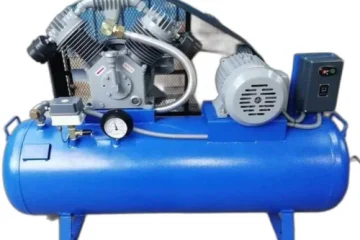Introduction
The Internet of Things (IoT) is transforming the way we interact with the world around us. By connecting everyday devices to the internet, IoT allows for seamless communication and control, making our lives more convenient and efficient. But what exactly is IoT device control, and why is it so important? In this article, we’ll dive deep into the fascinating world of IoT, exploring its evolution, components, types, and the critical role of device control.
The Evolution of IoT
The concept of IoT has been around for decades, but it has only recently gained significant traction. Early ideas revolved around networked devices and sensors, but it wasn’t until the advent of advanced wireless technology and the proliferation of internet access that IoT truly began to flourish. Today, modern advancements have made IoT an integral part of various industries, from healthcare to manufacturing, and its growth shows no signs of slowing down.
Components of IoT Systems
An IoT system is composed of several key components that work together to provide seamless functionality:
Sensors and Actuators
Sensors collect data from the environment, such as temperature, humidity, or motion, while actuators perform actions based on this data, like adjusting a thermostat or turning on a light.
Connectivity
Connectivity is the backbone of IoT, enabling devices to communicate with each other and with central systems. Common connectivity options include Wi-Fi, Bluetooth, Zigbee, and cellular networks.
Data Processing and Storage
Data collected by sensors is processed and stored, either locally on the device or in the cloud. This processed data is then used to make informed decisions and trigger actions.
User Interfaces
User interfaces allow humans to interact with IoT devices, whether through mobile apps, web dashboards, or voice assistants like Alexa and Google Assistant.
Types of IoT Devices
IoT devices come in various shapes and sizes, tailored for different applications. Here are some primary categories:
Consumer IoT
Consumer IoT includes devices used in everyday life, such as smart home appliances, wearable fitness trackers, and connected cars.
Industrial IoT
Industrial IoT (IIoT) focuses on manufacturing and industrial applications, including automation, predictive maintenance, and asset tracking.
Healthcare IoT
Healthcare IoT encompasses devices that monitor patient health, provide remote diagnostics, and streamline healthcare delivery.
Importance of Controlling IoT Devices
Effective control of IoT devices is crucial for several reasons:
Security Concerns
With the increasing number of connected devices, security has become a significant concern. Proper control mechanisms help prevent unauthorized access and cyberattacks.
Efficiency and Automation
Controlling IoT devices enables automation of routine tasks, improving efficiency and reducing the need for manual intervention.
Data Management
Accurate control ensures reliable data collection and management, which is vital for making informed decisions and optimizing performance.
Methods of Controlling IoT Devices
There are various methods to control IoT devices, each suited for different scenarios:
Manual Control
Manual control involves direct human intervention, such as using a mobile app to turn on a smart light.
Automated Control
Automated control uses pre-set rules and algorithms to operate devices without human intervention, like a thermostat adjusting temperature based on time of day.
Remote Control
Remote control allows users to manage devices from a distance, providing flexibility and convenience. This is typically done through mobile apps or web interfaces.
IoT Control Protocols
Effective IoT device control relies on robust communication protocols. Some of the most common include:
HTTP/HTTPS
HTTP/HTTPS is widely used for web-based control and communication between devices and cloud services.
MQTT
MQTT (Message Queuing Telemetry Transport) is a lightweight protocol designed for efficient communication in low-bandwidth environments.
CoAP
CoAP (Constrained Application Protocol) is optimized for resource-constrained devices, enabling reliable communication with minimal overhead.
Security in IoT Device Control
Security is a paramount concern in IoT. Here are some common threats and best practices:
Common Threats
- Unauthorized Access: Hackers gaining control of devices.
- Data Breaches: Sensitive information being exposed.
- Denial of Service Attacks: Disrupting device functionality.
Best Practices for Security
- Encryption: Ensuring data is encrypted during transmission.
- Authentication: Implementing robust authentication mechanisms.
- Regular Updates: Keeping device firmware and software up-to-date.
Challenges in IoT Device Control
Controlling IoT devices comes with its own set of challenges:
Interoperability
Different devices and platforms need to work seamlessly together, which can be challenging due to varying standards and protocols.
Scalability
As the number of IoT devices grows, systems must scale efficiently to manage increased data and control demands.
Privacy Concerns
With vast amounts of data being collected, ensuring user privacy is a critical concern that requires robust policies and practices.
Popular Platforms for IoT Device Control
Several platforms provide comprehensive solutions for IoT device control:
Google Cloud IoT
Offers a suite of tools for connecting, processing, and managing IoT devices at scale.
AWS IoT
Provides secure connectivity and control, along with advanced analytics and machine learning integration.
Microsoft Azure IoT
Features robust IoT services, including device management, security, and real-time analytics.
IoT in Smart Homes
Smart homes are one of the most popular applications of IoT:
Smart Home Automation
Automates routine tasks, like adjusting lighting, controlling appliances, and managing security systems.
Examples of Smart Home Devices
- Smart Thermostats: Automatically adjust temperature settings.
- Smart Locks: Provide remote access and monitoring.
- Smart Lights: Offer customizable lighting solutions.
Industrial IoT Device Control
Industrial IoT is revolutionizing manufacturing and industrial processes:
Industrial Automation
Uses IoT to automate machinery and production lines, increasing efficiency and reducing downtime.
Predictive Maintenance
Predictive maintenance monitors equipment health in real-time, predicting failures before they occur and reducing maintenance costs.
Healthcare IoT Device Control
IoT is making significant strides in healthcare:
Remote Patient Monitoring
Allows healthcare providers to monitor patients’ health remotely, improving care and reducing hospital visits.
IoT in Medical Devices
IoT-enabled medical devices provide real-time data, enhancing diagnostics and treatment.
Future Trends in IoT Device Control
The future of IoT device control is bright, with several exciting trends on the horizon:
AI and Machine Learning Integration
AI and machine learning are enhancing IoT capabilities, enabling more intelligent and autonomous control.
Edge Computing
Edge computing processes data closer to the source, reducing latency and improving real-time decision-making.
Conclusion
IoT device control is a critical aspect of the growing IoT ecosystem. From improving security and efficiency to enabling innovative applications in smart homes, industries, and healthcare, the ability to control these devices effectively is paramount. As technology continues to evolve, we can expect even more sophisticated and seamless control mechanisms, paving the way for a smarter, more connected world.
FAQs
1. What is IoT device control?
IoT device control refers to the methods and protocols used to manage and operate IoT devices, ensuring they function correctly and securely.
2. Why is security important in IoT device control?
Security is crucial to prevent unauthorized access, protect sensitive data



